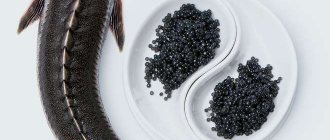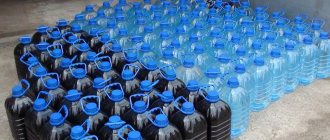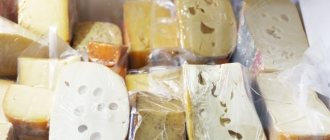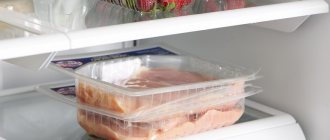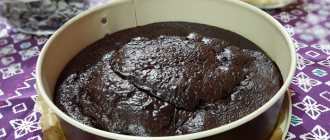Is it possible to make wine in plastic bottles?
When the preparation of homemade wine comes to an end, the question immediately arises of where to pour it next. The most commonly used are plastic bottles. But it remains questionable whether it is suitable for this purpose or whether it is better to pour it into glass. But it’s better to make it in glass containers.
Advantages and disadvantages
Most often, finished homemade wine is bottled in plastic bottles. Almost every home has empty lemonade or water containers. Therefore, it is not necessary to spend money and buy additional packaging. But this storage method has advantages and disadvantages.
Advantages of using a plastic container:
- low price;
- different volumes;
- weight (it’s convenient to sell in such containers);
- capacity;
- ease of use;
- easy to clean;
- You can ferment in plastic bottles;
- there is an opportunity to reuse.
But using such containers for dispensing alcohol has many disadvantages. If you put plastic in a warm place, harmful substances, including microplastics, begin to be released. This also happens if you put it on fermentation. Despite the fact that plastic bottles are easy to use and inexpensive, storing drinks in such containers is dangerous. Especially if the containers will be exposed to high temperatures.
But if you follow the storage rules, you can pour homemade wine into plastic without fear that it will have a harmful effect on your health.
What kind of plastic is suitable?
Not all types of plastic are used to store homemade wine. Containers of water or other drinks are suitable. But in this case, you still need to choose containers. Very often, due to storage in plastic bottles, alcohol acquires an unpleasant plastic taste and begins to smell bad. Another big problem with using plastic is that it allows air and other gases to pass through. As a result, oxidation processes occur.
To understand whether a container is suitable for bottling or not, you need to look for the PETE or HDPE icon. If the container has these markings, it means it is suitable for bottling.
All other types of plastic with other markings cannot be reused for bottling any drinks, not just wine.
See also
4 simple recipes for making wine from green grapes at homeRead
Storing homemade wine in plastic bottles and glass jars
Beginner winemakers often lack suitable containers for storing finished drinks - dark glass wine bottles with a special stopper. The first thing that comes to mind is to pour homemade wine into plastic bottles or three-liter glass jars for preservation. Both methods have both advantages and significant disadvantages. In order not to spoil the drink, a special approach is required.
Attention! The purpose of this article is to consider simple options for temporary storage of wine in conditions of limited resources. I am not calling for abandoning traditional bottles, replacing them with plastic containers and cans. This is only advisable in a critical situation and for a short period of time.
How to store wine in a plastic bottle
There are quite a lot of negative reviews on the Internet. Often, users complain about the appearance of a plastic smell or taste in wine. Indeed, due to the characteristics of the material, simply pouring wine into the first plastic bottle you come across without understanding the essence of what is happening is very risky.
To store wine, you can only use plastic bottles marked PET (PETE) and HDPE (the first two types, usually marked on the bottom). Plastic with numbers 3-7 is not suitable! But it is worth remembering that chemical elements even in the composition of PET or HDPE plastic can react with alcohol, the strength of which is higher than 18-20%. This does not threaten ordinary homemade wine with a maximum alcohol content of 10-14%, but before you pour fortified wines into plastic containers for storage, I advise you to think about the consequences.
Another problem with plastic is its ability to allow air and other gases to pass through, which leads to oxidation and a slow deterioration in the quality of wine over long periods of storage.
Considering the properties of the material, homemade wine can be stored in plastic bottles for no longer than 3 months in a dark room with a temperature of 5-16°C.
To avoid contamination of the drink with pathogenic microflora, the appearance of a plastic smell or taste, I advise you to strictly follow the bottling technology:
- Only use beverage and food bottles. Preferably with minimal odor, for example, it is very difficult to wash the container in which beer was stored; the specific aroma of hops remains, which can spoil the wine.
- Check the labeling, it should say PET (PETE) or HDP (number 1 or 2 in a triangle with arrows).
- Rinse the bottle thoroughly with warm water (temperature no higher than 25-30°C). Dry. After drying, sniff, lightly pressing on the edges near the bottom so that the air inside the bottle moves closer to your nose. There should be no odors, otherwise throw away the bottle.
- Prepare a disinfectant solution: dilute pharmaceutical iodine in cold, settled water (proportions: 10 ml of iodine per 25 liters of water). Any other disinfection method suitable for plastic and food can be used. Iodine is the simplest and most affordable solution.
- Pour the prepared disinfectant into bottles (preferably to the top or periodically shake incomplete containers). Separately soak the lids in the solution. Leave for 45-60 minutes.
- Drain the solution. Fill disinfected plastic bottles with wine, leaving 1-2 cm to the edge of the neck. Seal tightly with lids.
- Store in a cellar, basement or refrigerator for no longer than 3 months in an upright position. At least once every 10-15 days, check the organoleptic properties of the wine; if any foreign odors or tastes appear, immediately change the container.
Plastic containers labeled PET and HDP are excellent for fermentation.
Storing homemade wine in twist jars
When aging wine in ordinary liter or three-liter jars, there is only one problem - how to ensure sealing without harming the drink. When preserving, jars are rolled up with metal lids or closed with nylon lids. If they come into contact with wine, both of these materials can change the taste for the worse. The metal oxidizes, nylon releases specific substances.
The problem with the lid can be solved in two ways. The first and most correct option is to use a glass lid for the jars, and be sure to replace the rubber seal with a safe silicone one. The main thing is that the jar is sealed and does not let air through. In the case of a glass lid, the shelf life of wine in a dark glass jar is 2-3 years (in fact, this is a full bottle), in a clear glass jar - 1 year. Fill the container to the top.
A glass lid with a silicone seal instead of rubber is the best solution
Rules for storing in plastic containers
To ensure that homemade wine does not spoil for as long as possible, it must be bottled correctly and optimal storage conditions must be observed. Rules for storing drinks in plastic:
- You can only use bottles that have previously contained drinks or other food products. You should not use other bottles.
- It is also important to check the labeling before pouring the drink. The label must say PET (PETE) or HDPE.
- Before pouring the drink, the container will have to be thoroughly washed with soap and dried. There should be no smell coming from it.
- After the bottle has been washed, it should be disinfected. An iodine solution is suitable for this. Dissolve 3-5 drops of iodine in water and rinse the container with the solution. Then rinse with clean water.
- It is also advisable to soak the lids in an iodine solution for 35-50 minutes.
- It is recommended to check wine in plastic regularly. If an unpleasant odor or taste appears, you should immediately pour it into a clean container.
- The drink should be stored upright in a cool place.
After the bottles are ready, pour the wine and seal them with lids.
How to store homemade wine at home
Home winemaking is an interesting and productive activity, but it requires knowledge and strict adherence to a number of rules. So, one of the important questions is how to store homemade wine at home. In this material we will tell you which microclimate is best suited for storage, and also reveal the specifics of preparing a particular container.
Storage location and microclimate
The best place to store wine is a ventilated stone cellar. It must support the following conditions:
- Temperature ranges from +14…16 ℃ for dessert wines and +10…12 ℃ for table wines.
- Humidity is about 80-85%, especially if the bottles are sealed with natural corks.
- Minimal lighting . Wine spoils from light, so it is advisable to keep it in a dark place.
- Peace . Even minor shocks damage the wine.
- Purity . The basement should be free of mold and rotting fruits or vegetables.
It is not recommended to store homemade wine in an apartment - it is impossible to maintain the necessary conditions there. This also applies to the refrigerator: it is too cold, and constant shaking is harmful to the drink. On the balcony, wine will be spoiled by frequent temperature changes.
Storage container
First of all, you need to choose the right container.
Glass containers
Glass bottles or jars are ideal for long-term wine storage. It is advisable to choose the volume so that you can drink the contents at one time, otherwise the remainder will quickly deteriorate. For big holidays, you can prepare several larger containers; for family dinners or meetings with friends, smaller ones.
To seal bottles, stoppers should be driven into them and filled with wax or sealing wax. Jars must be closed with glass lids with a silicone seal. If there are none, you can use metal or nylon ones, but the shelf life of the drink in this case will be shorter.
You can store homemade wine in a transparent bottle or jar for no more than 1 year.
The shelf life of wine in dark glass containers depends on the type:
- plum and cherry – 3 years;
- grape – 4 years;
- sea buckthorn and rowan - up to 5 years.
If the lid is metal or nylon, the shelf life of the drink is reduced to 3-7 months. To prevent the wine from coming into contact with the lid materials, you can leave 4 cm of free space in the jar. When exposed to air, the drink will oxidize slightly, but this will have less effect on its taste.
Plastic bottles
An important question is whether it is possible to store homemade wine in plastic bottles, for example, water bottles.
This method is allowed for wines with an alcohol content of no higher than 10-18% and for no more than 3 months. The bottle must be marked PET (PETE) or HDPE and with the numbers 1 or 2. These marks are located on the bottom, in a triangle with arrows. Plastic marked with numbers from 3 to 7 cannot be used.
Everything you need to know about wine expiration dates
The shelf life of wine largely depends on the conditions in which the drink is stored. If it is stored in plastic, please note that the shelf life is about 3 months. Containers should be placed in a cool place where sunlight does not penetrate. The optimal temperature is +5 – +15 degrees.
If you keep a drink in plastic for longer, then even under favorable storage conditions, oxidation processes will begin to occur over time. Because of this, the taste of the drink deteriorates. Not to mention the fact that plastic begins to release microplastics, which are dangerous to human health.
See also
6 simple recipes for making rhubarb wine at homeRead
The maximum shelf life may be if it is stored in glass jars or bottles. For example, you can roll up cans of wine the same way you roll up canned food.
Storage time for wine in plastic
The shelf life in plastic is short. Even if all storage conditions are met, the shelf life is still 3-5 months, no more. Of course, you can store it longer, but the taste of the drink may leave much to be desired. Alcohol takes on an unpleasant aftertaste and also begins to smell bad.
It is best to use glass. You don't have to buy special bottles. Regular jars are quite suitable for this purpose.
Some winemakers recommend pouring purchased wine in plastic bottles (for example, homemade wine is found on almost every corner among local residents in the south) into glass containers. It is best to roll them up with lids after this. But any other sealed packaging will do.
Modern plastic containers for storing wine
But the production process does not stand still, so modern manufacturers have made special containers for storing wine in plastic bottles. These companies claim that the plastic they used is completely passive and therefore does not interact with alcohol (or with other products). They are also impermeable to all gases, i.e. wine does not oxidize under the influence of oxygen.
But how long can you store wine in a plastic bottle? In fact, despite the apparent quality of plastic, it is not as ideal for storage as glass containers. More recently, in the homeland of the most delicious wine, France, scientists conducted a small but interesting experiment.
In the laboratory, they created a simple model of wine by mixing two ethyl esters (complex forms) and two alcohols. Next, they were poured into an acidified aqueous solution of ethyl alcohol. These four elements are the main elements that give flavor to alcoholic beverages.
By pouring the wine substitute into a special plastic container, scientists monitored its changes. Based on the results of the study, we can say that the mixture and plastic did not come into contact, so it is not dangerous to humans.
But some elements quietly leaked through the walls of food-grade plastic. For example, 4-ethylphenol (responsible for the subtle aroma) leaked almost half of the total volume, and ethyl hexanoate (gives the wine a fruity taste) leaked into the plastic by a quarter of the total volume.
Accordingly, such properties of polyethylene to absorb certain alcohol substances significantly affect its taste. These studies have been disputed by other scientists, since there was still no real tasting. A second stage is planned, where professional tasters will be involved in the experiment, but for now winemakers are not taking risks with storing a good drink.
Of course, whether it is possible to store wine in plastic containers is up to the manufacturer to decide, but if it has a high quality mark, then there is no need to spoil the drink with polyethylene. If you use plastic containers, you need to choose high-quality ones, preferably with a large number of layers so that they do not allow oxygen to pass through. Such containers are well suited for homemade wine, which is usually not stored for long in plastic bottles.
How long can you store after opening the container?
The shelf life after opening the container of any wine is several months. After opening, it is recommended to store it for no more than two months. But this rule is often neglected. This is especially true for homemade wine. Plastic is not the best material for storing alcoholic beverages anyway. It is used in extreme cases. It is recommended to store purchased wine in plastic bottles for no more than six months after opening.
After opening, it is recommended to pay even more attention to storage conditions. Under no circumstances should you leave alcohol in the sun or in a room with high air temperatures. Open alcohol can only be stored in the refrigerator. If these conditions are not met, the drink will spoil the very next day after the bottles are opened.
How to store homemade wine: tips and tricks
Making a homemade grape drink is not a simple procedure. Homemade grape wine will quickly spoil without proper storage. Such cases occur frequently. In addition to its manufacture itself, you need to know how to store it correctly. If you follow all the rules, you will protect its bouquet and richness. So how to store homemade wine in an apartment?
Application of containers
First of all, you need to decide in which vessel to keep it. The duration of open aging depends on how much sugar, alcohol and tanning components are in the composition.
In production, not only grapes are used, but also cherries. When choosing berries, you should carefully examine them. There should not be the slightest damage to them. You will also need a large amount of sugar.
So, let's figure out which container to use for storing wine? To store wine at home, you can use either a plastic bottle or a glass container.
Storage in a plastic container
Plastic containers are not the best option for a homemade grape drink. On the Internet you can find a lot of bad reviews about storing homemade wine in plastic bottles. What is this connected with? Some winemakers think that if you store homemade grape drink in plastic bottles, it will develop a peculiar taste and smell. All plastic containers are made from different polymers. Before pouring a drink from grapes into a bottle, you must carefully look at what markings are indicated on it.
These markings indicate that the container is made of food-grade plastic and can be used for handling food.
Plastic bottles with other markings are absolutely not suitable for wine preservation procedures. If the strength is more than 20 degrees, then any plastic, including food grade, can react with alcohol. Remember - wine should be stored in plastic bottles at only 10 - 14 degrees. For stronger ones, it is advised not to use plastic bottles, otherwise its taste may deteriorate.
- Only use food or beverage containers. Before use, wash them thoroughly with detergent.
- Be sure to check the labeling. They are at the bottom of the bottle.
- After washing, be sure to disinfect the container using iodine and water. The antiseptic is diluted in cold water in a ratio of 1:2500. It is not necessary to use iodine. Iodine can be replaced with another product that is suitable for working with plastic and food.
- The prepared disinfectant is poured into a container and shaken thoroughly for 1–2 minutes. The lids are soaked in the solution separately for about one hour.
- The product is poured out and the container is filled with wine, making sure that there is 1-2 cm left to the neck.
- Tightly closed bottles are placed in the basement and remain there for up to 3 months; they need to be placed vertically. Every 10–15 days it is necessary to monitor its taste.
At what temperature should grape drink be stored? It should be stored in a dark place, at a temperature of 2–6 degrees. This is how a bouquet is formed. If you store it in a room, it will have a foreign smell.
Storage in glass containers
How to store homemade wine at home in jars? Many people are very interested in this question. When storing wine in glass containers, sealing difficulties may arise. Nylon or metal lids are not entirely suitable for storage. Metal lids quickly oxidize, while nylon lids affect the taste of the wine drink. But despite this, storage is possible. The main condition is carefully sterilized lids that do not come into contact with the drink itself. How long does the drink last? The shelf life when stored in glass jars is approximately six months, the wine should then be drunk. It is also better to store wine in dark glass bottles.
When storing wine in glass containers, it is better to use glass lids with silicone seals. This way you can store wine in a dark room for 2-3 years. Fill the glass container to the very brim so that there is minimal space for air. At what temperature should a homemade drink be stored in a glass container? The best temperature is considered to be 2–4 degrees, storage in a dark basement or cellar. Why a cellar, you ask? There is the best storage environment - adequate ventilation, humidity, protection from vibration.
Opened drinks have a shorter shelf life. To store wine open, you should also use a dark place with a low temperature.


